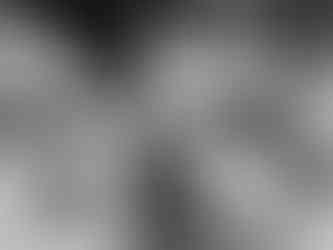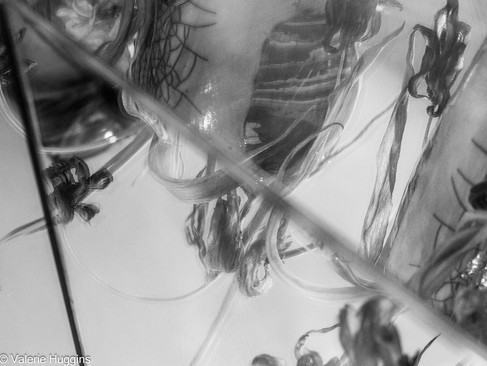Nature Morte à la mode de Florence Henri
- valeriehuggins0
- Apr 21, 2023
- 4 min read

I am continuing to experiment with the ideas of Florence Henri, a leading photographer in the 1920s and 1930s, whose work and life I find fascinating. A student of the Bauhaus, influenced by Cubism, Contructivism and Purism, she went on to become a renowned avant-garde professional photographer:
“With photography, what I really want to do is compose the image, as I do in painting. The volumes, lines, shadows and light should submit to my will and say what I would like them to say. All of this under the strict control of the composition, because I do not claim to be able to explain the world or to explain my own thoughts.” Florence Henri in an interview with Attilio Colombo, “Specchio, essenzialità, geometría,” in ‘Florence Henri’ (Milan: Gruppo Editoriale Fabbri, 1983
Carter Boyd writes in 2017 that Florence studied art under a number of leading abstract painters, including Kadinsky, and while at the Académie Moderne in Paris, Fernand Léger, a Cubist painter, and Amédée Ozenfant, a Purist and their influence is clear in her work. The Purist philosophy of Leger and Ozenfant led to "an art that stressed mathematical order, purity, and logic. To achieve this sense of fundamental order they systematized their expression of visual phenomena into a precise arrangement of modern, impersonal, “universal” forms, especially images of simple machine-made objects from everyday life.....reducing such elements to a simplified geometry and combining them to produce compositions of unruffled harmony.' I was amazed to learn that in 1925 her paintings were exhibited in Exposition International. L'Art d'Aujourd'hui, sharing the walls with work by Paul Klee, Piet Mondrian, and Pablo Picasso and yet until recently I had not heard of her. Clearly Florence was very talented and was becoming recognised within the avant-garde circle as a skilled artist
In her paintings, Florence played around with Purist and Cubist concepts, exploring repetition, lines and geometric shapes, as in this composition from 1925-26:.

b. Florence Henri, Composition , 1925-1926, oil on wood, 33x41,5 cm. Gallery Martini & Ronchetti.
which become features of her still life photography by the end of the 1930s, as in this image:

b. Florence Henri, Fruit , 1929, V&A Collection
As Katherine Rushworth notes in her review of Henri's exhibition in Everson Museum of Art in 2015, in her photographs: "Reflections and objects ebb and flow between perception and reality, dark and light, shape and line, object and illusion".
I had enjoyed playing with these ideas with portrait photography (see previous blog) so I turned my attention to still life. I reviewed the photographs contained in the book of the 2015 Jeu de Paume exhibition:
I identified elements that recurred and made her work distinctive and set about recreating some images. I confined myself to just using objects that I already had in my home, in the way that I envisaged Florence did with her experiments in her home and studio.
My first attempts with a mix of fruit and mirrors showed me how difficult it was to set up the composition precisely to get the range of reflections:
But I continued to experiment, introducing more elements and reflective surfaces:
I realised though that I also needed to think about introducing spheres and lines, and all I could find was a newton's cradle toy. It had to do, at least the spheres were reflective:
Florence was also known for experimenting with double exposure and photomontage. Here I use photoshop to combine images, applying different blend modes to preserve the shapes of the fruit and flowers, while retaining an abstract feel overall:
And here the raindrops on the petals are topped with silver spheres and lines, representing many of Florence's motifs:

while this image takes the abstraction much further, with several layers and a darker blend mode, to emphasise the lines and the shapes of the dying petals of the tulips:

As I write this blog, I am becoming more conscious of how researching the work of Henri is potentially helping my photography. The examples above show how I am going out of my comfort zone into portraits and still life, honing in on composition. I am learning that using monochrome focuses my attention on contrasts in an image such as light and dark, because there is no colour to distract the eye. I am also aware that her influence is shaping what I turn my attention to. I noted the light shining through a glass of water and creating abstract patterns on the wall, which altered depending on where I was standing. I appreciated the lines, the simple geometric shapes and the natural monochrome, and took these with my phone camera.
After a heavy shower, the raindrops on the white tulips on the patio caught my eye. Thinking 'Florence!' I put a mirror in the pot and caught these images, which gradually become more abstract:
These images hopefully challenge and question our perceptions of reality in the way that Florence Henri achieved nearly 100 years ago. Undertaking this project on her work has enhanced my respect for her creativity, imagination and innovation.
#FlorenceHenri; #avantgarde; #monochrome; #Bauhaus; #photographywithmirrors; #1920sphotography; #Constructivism; #doubleportrait; #femalephotographer; #moholynagy; #NewVisionphotography; #Purism; #Cubism; #naturemorte, #tulipphotography, #fruitstilllife, #multipleexposure, #photoshopblends

















































Comments